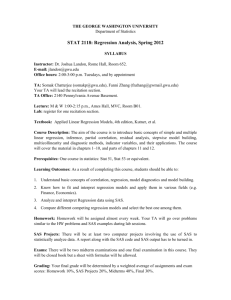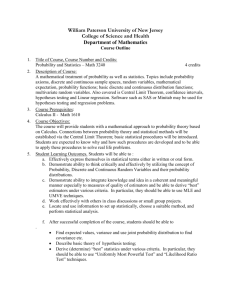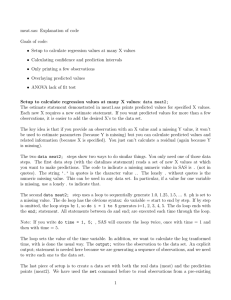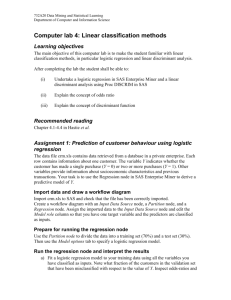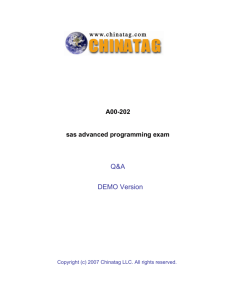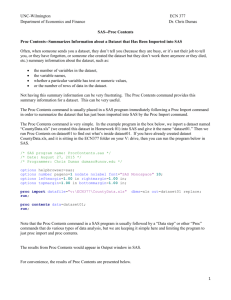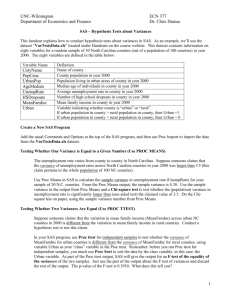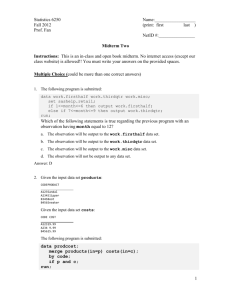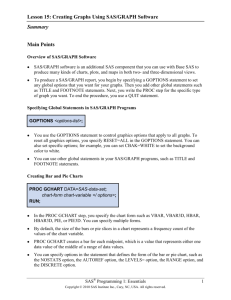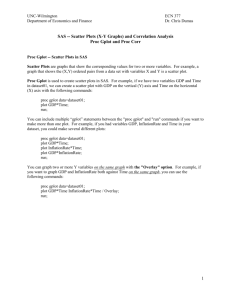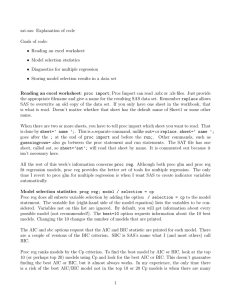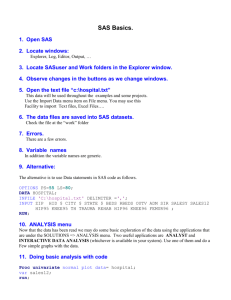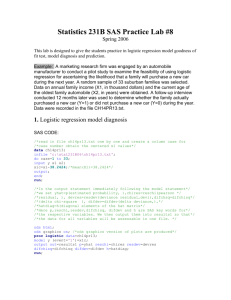UNC-Wilmington ECN 377 Department of Economics and Finance
advertisement
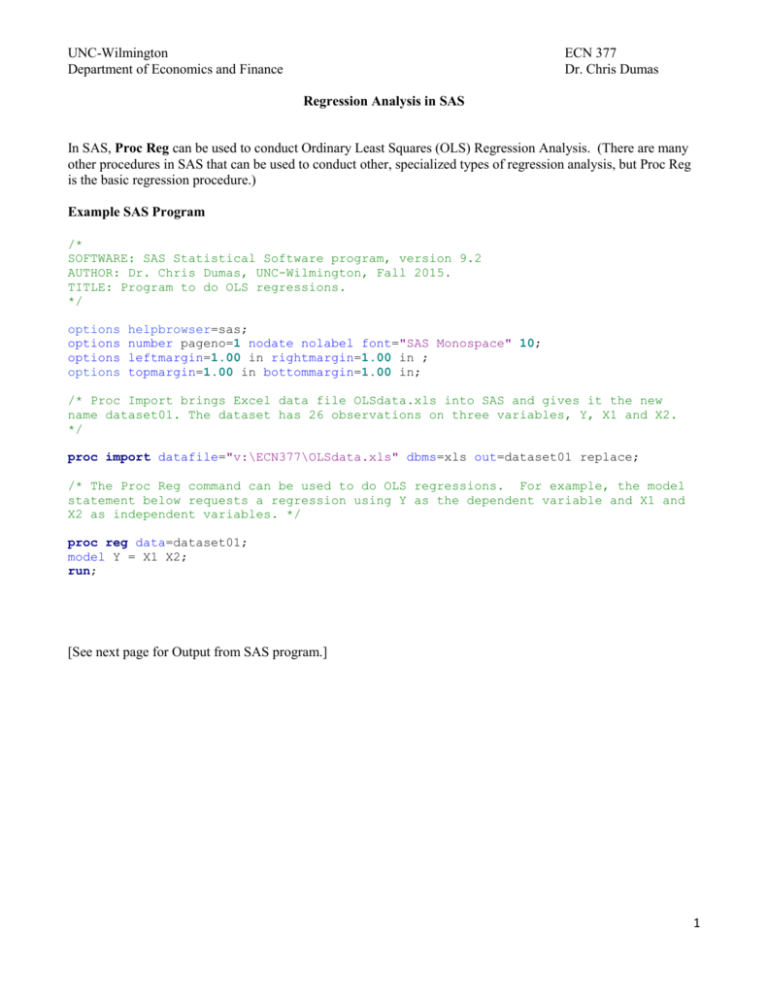
UNC-Wilmington Department of Economics and Finance ECN 377 Dr. Chris Dumas Regression Analysis in SAS In SAS, Proc Reg can be used to conduct Ordinary Least Squares (OLS) Regression Analysis. (There are many other procedures in SAS that can be used to conduct other, specialized types of regression analysis, but Proc Reg is the basic regression procedure.) Example SAS Program /* SOFTWARE: SAS Statistical Software program, version 9.2 AUTHOR: Dr. Chris Dumas, UNC-Wilmington, Fall 2015. TITLE: Program to do OLS regressions. */ options options options options helpbrowser=sas; number pageno=1 nodate nolabel font="SAS Monospace" 10; leftmargin=1.00 in rightmargin=1.00 in ; topmargin=1.00 in bottommargin=1.00 in; /* Proc Import brings Excel data file OLSdata.xls into SAS and gives it the new name dataset01. The dataset has 26 observations on three variables, Y, X1 and X2. */ proc import datafile="v:\ECN377\OLSdata.xls" dbms=xls out=dataset01 replace; /* The Proc Reg command can be used to do OLS regressions. For example, the model statement below requests a regression using Y as the dependent variable and X1 and X2 as independent variables. */ proc reg data=dataset01; model Y = X1 X2; run; [See next page for Output from SAS program.] 1 UNC-Wilmington Department of Economics and Finance ECN 377 Dr. Chris Dumas Output from SAS Program Key for SAS Program Output The SAS System 05:54 Sunday, March 24, 2013 The REG Procedure Model: MODEL1 Dependent Variable: Y Y 1. Name of dependent (Y) variable 2. Sample Size (n) 3. RSS 4. ESS 5. TSS 6. d.f. numerator for F-test 7. d.f. denominator for F-test 8. Ftest number 9.”Pr > F” gives p-value for Ftest 10. SER 11. Mean value of dependent (Y) variable 12. R2 13. Adjusted R2 (Rbar-squared) 14. List of independent (X) variables 15. “Parameter Estimate” column gives estimated values of the 𝛽̂ ’s in the regression equation 16. standard errors (s.e’s.) of the 𝛽̂ ’s 17. ttest number for test: H0: β = 0 H1: β ≠ 0 18. sum of DF in column = k (here, k = 3) d.f. for tcritical = n – k (here, d.f. = 26 – 3 = 23) 19. “Pr > |t|” gives p-values for t-tests 3 1. Number of Observations Read Number of Observations Used 26 26 2. Analysis of Variance 3. Sum of 4. Squares Mean Square 2 23 25 5. 1551.00585 775.50293 22.17199 Root MSE Dependent Mean Coeff Var 4.70871 14.96154 31.47212 Source 6. Model Error Corrected Total 10 . 11 . Variable 14 Intercept . X1 X2 7. DF 509.95569 2060.96154 R-Square Adj R-Sq 8. 9. F Value Pr > F 34.98 <.0001 0.7526 0.7310 12 . 13 . Parameter Estimates Label Intercept X1 X2 DF Parameter Estimate Standard Error 18 1 1 . 15 7.70949 . 0.90064 16 1.46982 0.14345 . 1 0.03093 0.05922 t Value 17 5.25 6.2810 0.52. Pr > |t| <.0001 <.0001 0.6064 19 . 2


